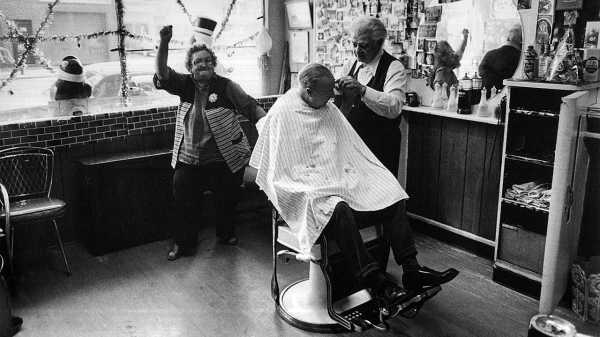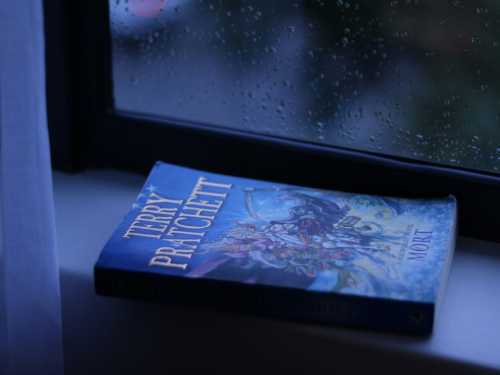
The most important part of a documentary is what’s offscreen—the virtual images of systems, causes, history, and society at large that leave their traces visible in the present tense of filming. Some filmmakers develop complex strategies (including animation and special effects) to get at what lies beyond the camera’s range. Others, such as Frederick Wiseman, stand the problem on its head and film only what they have immediate access to, but their selections of what to film, how to film it, and how to edit it are sufficiently analytical as to evoke an iceberg of which what’s onscreen is just the tip. The longtime filmmaker Jon Alpert is of the latter school, as seen in his New York-centered film “Third Avenue: Only the Strong Survive” (streaming on OVID.tv and Vimeo), from 1980, a classic work of direct, reportorial cinema that reaches deep beneath its surfaces to provide a keen analysis of systemic social disorders.
Alpert and Keiko Tsuno, the husband-and-wife team who founded the Downtown Community Television Center in 1972, are among the pioneers of documentary filmmaking with portable video technology. That equipment—and what Alpert, as director and cameraperson, does with it—is at the heart of the film’s probing power. The street of the title is actually two streets: there’s a Third Avenue in Brooklyn and another stretching from downtown Manhattan to the Bronx, and both of them figure in the film. In an economical fifty-nine minutes, Alpert offers a series of six sketch-like but joltingly intimate portraits, of individuals and families, on and around different parts of these thoroughfares. The geographical premise is a mere springboard, an organizing principle of a defining near-randomness; what unites the film’s protagonists is poverty, found in many varieties on the streets in question. What distinguishes the participants is their personalities, their desires, their struggles, the varieties of agony that the lack of money imposes on them, and the inseparability of their needs from the circumstances—personal, social, historical—in which they find themselves.
From the eyepiece of the camera, Alpert talks with his subjects; in the film’s more playful moments, some seem to be performing for the camera. “Third Avenue” is a film of dialogue, of conspicuous intervention—there’s no “fly on the wall” disappearance amid the action and little of the habituation to the camera that Wiseman’s subjects display. Each of the six segments identifies its prime participants by name and locale. Sonny owns a chop shop on Twenty-second Street in Brooklyn and enthuses about the markup of parts that he sells, the high price that they command, and the low price of the cars that he strips—the implication being, of course, that they’re stolen. Sonny’s son Eddie and son-in-law Michael work for him; they display their craft for Alpert in a remarkable single-shot scene—Eddie approaches, enters, and drives off in a car in thirty seconds flat—that a title card labels “a re-enactment of an actual event.” Sonny talks of his own father’s lifetime as a working man, an employee who “never had anything”; Eddie talks of being raised in a cramped apartment, and he and Michael talk about the impossibility of saving money from workingman’s wages. They admit to a craving for creature comforts and daily luxuries, and they’re ready, if necessary, to face the legal consequences for their efforts to satisfy them.
The inadequacy of working wages is a recurring theme of “Third Avenue.” Raul Lopez, a middle-aged factory worker from Brooklyn and an evangelical proselytizer on the streets, chats on his lunch break with another employee, a young man who expresses astonishment that Raul has raised seven children on his income. But, in an edit that smacks of a harsh reproach to Raul’s faith-based economics, Alpert introduces several of his subject’s children. One is called, in onscreen titles, a “street hustler,” and he boasts of sleeping away the day and getting high; another sells joints; a third is a sex worker who says, “My father can’t support us,” and who, as Alpert notes, makes more in a day than Raul does in a month. And Raul’s eleven-year-old son, David, hangs out on the street with teens and adults, one of whom starkly sets out the problems that David faces: “We’re in a bad influential area. . . . It’s like sticking your hand in an oven. You’re gonna get burned.” He goes on, “How can a person grow up in a corrupted world and find himself a future?”
The geographical aspect of “Third Avenue” has little to do with travel. On the contrary, the movie emphasizes the containment of Black, brown, and immigrant residents in ghettos, where poverty sparks a wide range of social ills, governmental indifference exacerbates them, and isolation keeps them out of sight and out of mind for what passes as society at large—namely, the fictional constructs of moneyed media. Trudy, a Black woman, is raising her young children on 183rd Street, in the Bronx, in a building that she declares “unfit for anybody to live in.” She easily proves the point on camera, displaying a back yard that resembles a garbage dump, a staircase with an entire landing’s worth of floorboards missing and leading to free fall, an apartment completely burned out, and no defense against thieves who pillage the building for its pipes. (In the course of Alpert’s visits, Trudy loses running water altogether and is seen toting buckets up to her apartment.) As she says, she and her neighbors are poor, on welfare, and unable to hire lawyers to fight the landlord. (She applies for public housing and is told to be grateful that she has an apartment at all.) But the underlying failure that she endures is legal and official: failure of inspection, failure of enforcement, failure to make fair demands of property owners to maintain safe and sanitary conditions. The welfare check that she gets appears to be a measured minimum, calculated to buy silence—to reinforce not dependence but despair, to adduce plausible deniability of official indifference, to perpetuate ghettoized isolation and predatory degradation rather than remedy them.
Despair takes a variety of forms, including on the southern part of Manhattan’s Third Avenue, the Bowery, which was, at the time, a center of New York’s unhoused single men, many of them alcoholics. Alpert films some of these men, young and old, and focusses on one, Joe Bonneville, a skilled panhandler who, with a suit and a cane, does well enough to flash a wad of cash in a Bowery bar. Joe boasts of having left his wife over a decade ago, going out for cigarettes and never coming back. Alpert meets Joe’s wife (unnamed in the film), who says that she married at fifteen to get away from the drudgery of housework for her widowed father—and she is present for Joe’s unwelcome return. Ricky, a young male sex worker on Manhattan’s Fifty-third Street, details for Alpert the routines and the dangers of the work, especially emotional ones that, he says, require him to abuse prescription drugs. (He explains how he turned his first trick, around the age of fourteen, after running away from reform school.) Ricky also takes Alpert on a nighttime tour of Forty-second Street, then a hub of pornography, and points out children (Black and brown ones) who he says are sex workers, including several boys who speak candidly to the director about what they do and why—namely, and simply, for money. (One claims to have started at the age of seven.)
The social ruins of poverty, the induced passivity of subsistence, the breakdown of community—they all get a tragicomic exposition in the movie’s concluding sequence, showing the Pascones, on Eleventh Street, in Brooklyn, an elderly Italian American couple who run a barber shop on Third Avenue that has lost most of its customers. The couple, who raised nine children, live in the back of the shop; Mrs. Pascone has long been ready to abandon the business and the neighborhood, but her husband (whom one of their daughters mockingly calls “the mayor of Third Avenue”) refuses to leave. There’s antic comedy in the couple’s playful jibing and theatrical Brooklynese. But the weight of the past and the sense of loss pervades their lives and that of their seemingly thriving family members, who manage, by way of young people’s nostalgia for a world that was vanishing, to keep the Pascones stuck in the amber of their long-past lives. “Third Avenue,” which was completed in 1980, seems virtually prehistoric—because its subjects, thrust in relentless struggles for mere survival, appear to be cut off from their own future and cast out of history itself. Alpert, in engaging with these urban castaways of modernity, puts their lives at the center of the times. ♦
Sourse: newyorker.com






